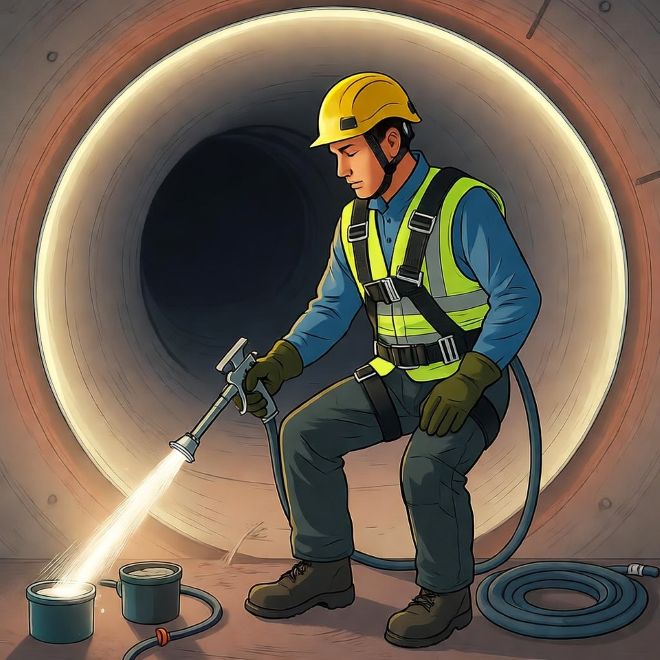
Every thriving city stands on an invisible network that keeps it alive. Beneath the concrete, the rush of pipes, tunnels, and cables forms an unseen lifeline. These underground systems, often ignored until they fail, are silent witnesses to the resilience of humanity. They tell stories of survival, progress, and renewal, the same themes that echo through our literature, art, and shared human experience.
The process of relinen, repairing old sewer lines without tearing up the ground, offers a profound metaphor for how societies heal and adapt. It reflects the ability to restore what is broken without erasing history, a quiet act of resilience that parallels how people mend emotional and social fractures. Just as pipes can be reinforced from within, communities and individuals often find ways to rebuild themselves internally, without always showing the scars on the surface.
The Hidden Pulse of the City
Urban infrastructure is often compared to the human body. Sewers are the arteries, roads the veins, and data cables the neurons that transmit information. Yet, few stop to think about how these systems, like us, need maintenance and care. When one fails, the effects ripple across everything else. Cities, like people, can break down if their inner workings are neglected.
This interconnectedness reflects a larger truth about resilience. Every repair beneath our feet mirrors an emotional or social reconstruction above ground. When a city invests in sustainable sewer technologies like relinen, it is not just fixing pipes. It is choosing renewal over decay. It is saying that the past mistakes of poor planning or neglect can be corrected without destroying what has already been built.
Literature, Renewal, and the Urban Spirit
Writers have long been fascinated by what lies beneath cities. From Victor Hugo’s vivid descriptions of Parisian sewers in Les Misérables to contemporary urban fiction, the underground often represents both decay and hope. It is a space where forgotten things gather, memories, history, waste, yet it is also where renewal begins. Repair, in this context, becomes an act of storytelling. To fix is to rewrite.
Just like a skilled engineer conducting relinen repairs, an author repairs meaning. They reshape the structure of human experience, filling cracks in understanding with empathy and imagination. Literature becomes the emotional equivalent of urban maintenance, preserving what matters while allowing transformation to occur from within. It’s a reminder that the unseen work, whether physical or emotional, is often the most important.
The Metaphor of Repair
Repair is a universal language. Whether it is a cracked pipe, a damaged relationship, or a city recovering from crisis, the idea of restoration connects all human stories. Modern cities rely on technology to keep functioning, yet their heart remains deeply human. The hands that guide a camera down a pipe or draw up a plan for relinen represent care, patience, and ingenuity, qualities that define our resilience as a species.
- Repair reflects continuity: It honors the past while preparing for the future.
- Repair reveals vulnerability: It acknowledges that failure is natural, but recovery is possible.
- Repair requires vision: It takes faith to see what something could become again.
These principles apply not just to sewers and streets but to entire societies. Cities that invest in maintaining their hidden systems demonstrate a belief in endurance. People who do the same for themselves mirror that same faith in renewal. Both suggest that strength is not in perfection but in persistence.
Resilience Beneath Our Feet
There’s poetry in the idea that what we walk over every day holds lessons about endurance. Beneath our feet lies a world of quiet activity, of constant flow and hidden effort. The next time we cross a busy street or see a manhole cover, it is worth remembering that a complex world of maintenance and renewal exists below, keeping everything moving. These are the silent acts that define civilization itself.
Ultimately, relinen and other forms of underground restoration symbolize hope. They remind us that renewal doesn’t always mean starting over. Sometimes, it means reinforcing the old with something stronger, cleaner, and wiser. The story beneath our feet is one of continuous adaptation — a narrative of human endurance told through pipes and tunnels. Just like the city, we are always repairing, always rebuilding, always finding strength in what remains unseen.
So the next time a street is dug up or a sewer is relined, think of it as a story being rewritten. Every act of restoration, whether underground or within the human spirit, is proof that resilience lives quietly among us — beneath the surface, beneath our feet, waiting to rise again.
Through the work of relinen, cities remind us that even the oldest foundations can find new life. What we repair, we preserve. What we renew, we strengthen. And in every act of quiet maintenance, humanity continues to tell its greatest story, one of survival, connection, and rebirth.
